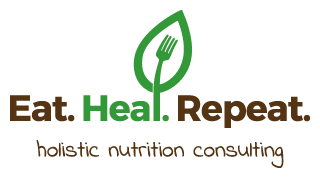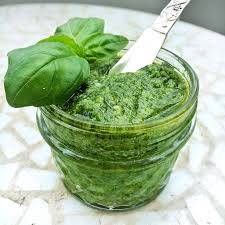FINALLY it’s time to harvest the last tomatoes, basil and other fresh herbs, before the first nights of frost. Like every year, now is the time to whip up a big batch of garlicky pesto. Some of it will never even make it to the fridge, but the rest can be frozen in small glass jars and then added in to perfect dishes as needed.
For a couple of years now, I have been making two types of pesto on ‘harvest day’: one traditional version, for when I crave just that flavor, and one dairy-free (vegan) kind, that makes for a zesty drizzle on quinoa bowls or caprese salads, and is a lovely dip for both veggies and bread. Both are fool-proof, and require nothing but a blender or food processor. The recipes can be adapted to whatever herbs are abundant in your garden (I like a mix of basil and other leafy greens such as parsley, mint or arugula – even spinach or kale), varieties of nuts on sale at your local store, and hard cheeses of your choice.
The process is simple: Wash and dry your herbs, peel the garlic, and toast the nuts (if using). Then, throw the nuts, cheese and garlic in the blender, and chop lightly. Add all the other ingredients and create a smooth puree. To store, fill the pesto into small jars and make sure to cover it completely with olive oil. Any little bits of basil that stick out might get moldy, so this step is important. Any time you take out a spoonful, be sure to add more olive oil.
Ingredients for The Traditional:
4 cups loosely packed basil (mixed with other fresh herbs, if you like)
3 cloves garlic, peeled
6 tablespoons extra virgin olive oil (plus more, for topping off the jars)
2 oz. parmesan cheese
1/4 cup pine nuts (or your favorite kind of nuts), lightly toasted
3/4 teaspoon pink Himalayan salt
Ingredients for The Vegan:
4 cups loosely packed basil (or other herbs/greens)
3 cloves garlic, peeled
8 tablespoons extra virgin olive oil (plus more)
1/3 cup nutritional yeast
1/4 cup pine nuts (or other nuts; the pesto is still delicious if you leave these out)
3/4 teaspoon pink Himalayan salt, or more to taste
Contains: Nuts, dairy (in the Traditional)
Nutrition Geekery:
Not only is garlic antimicrobial and antiparasitic, it also acts as a natural antibiotic. Its sulfur containing compounds, most notably allicin, quench oxidation, which protects your brain and your cardiovascular system. High-dose garlic can fight colds, lower LDL cholesterol, thin the blood and lower blood pressure. Be sure to let your garlic sit for a minute after crushing/chopping it, to activate all its health benefits.
The polyphenols in extra-virgin olive oil (EVOO) are heart-protective, since they protect the blood vessels from oxidative damage. Other plant-nutrients in EVOO prevent bone loss, slow the growth of harmful bacteria in the digestive tract, and boost brain health when the oil is consumed on a daily basis. Finally, a tablespoon or two of EVOO per day prevent oxidation in the cells, chronic inflammation, and cell (DNA) mutations – a.k.a. cancer.
The volatile oils and flavonoids in basil have anti-bacterial and anti-inflammatory effects. They also appear to protect cell-structures as well as chromosomes from damage. Like many green plant foods, basil is also a good source of magnesium and vitamin K, both of which can improve blood flow by relaxing blood vessels. Whenever possible, choose fresh basil over dried, and store it wrapped in a damp towel in the fridge until you are ready to use it.

